Adding Licensing and Attributions to Your Work for OER
by Diana Vera-Alba
by Diana Vera-Alba, San Diego Continuing Education
Posted November 2020
As educators, we often enjoy collaborating with other educators and sharing ideas, lessons, curriculum, and materials that we create. This spirit of sharing prompted the educational community to begin curating materials to be shared in what is known as Open Educational Resources (OER). Attributions are an important part of OER in defining how you can legally "borrow" someone else's work or identifying the permission level (or licensing) you give others to use your own work. Equally important is the ability to understand the various levels of permissions identified by the author of OER, whether it be course materials, modules, open textbooks, openly licensed videos, software, tools, full courses, or any other materials that are deemed to support access to learning.
These permissions, which are identified below, are defined in the following Creative Commons copyright licenses:
CC BY: Creative Commons By Attribution

- This attribution permission level is the least restrictive.
- Others can copy, distribute, display, perform, and remix your work and give you credit as requested by you.
- Others can use it commercially.
CC BY SA: Creative Commons By Attribution - ShareAlike

- Others can copy, distribute, display, perform, and remix your work and give you credit as requested by you.
- Others can distribute your work ONLY under a license identical to the one you have chosen for your work.
- Others can use it commercially.
CC BY NC: Creative Commons By Attribution - NonCommercial

- Others can copy, distribute, display, perform, and remix your work and give you credit as requested by you.
- Others cannot use your work for commercial purposes.
CC BY NC SA: Creative Commons By Attribution - NonCommercial ShareAlike

- Others can copy, distribute, display, perform, and remix your work and give you credit as requested by you.
- Others can distribute your work ONLY under a license identical to the one you have chosen for your work.
- Others cannot use your work for commercial purposes.
CC BY ND: Creative Commons By Attribution - NoDerivatives

- Others must give you credit as requested by you.
- Others can only copy, distribute, display, or perform verbatim copies of your work.
- Others can use your work for commercial purposes.
CC BY NC ND: Creative Commons By Attribution - NonCommercial NoDerivatives

- This attribution permission level is the most restrictive.
- Others must give you credit as requested by you.
- Others can only copy, distribute, display, or perform verbatim copies of your work
- Others cannot use your work for commercial purposes.
Open Attribution Builder
http://www.openwa.org/open-attrib-builder/
Now that you can identify the licenses and their permitted use, we can look at how to correctly add attributions to your work and the work of others. There are several excellent sites that house ready-made materials, textbooks, lessons. and many other teaching tools. One such OER repository is the Community College Consortium for OER (https://www.cccoer.org/learn/find-oer/). Other sites, such as Pixabay (https://pixabay.com/) and Unsplash (https://unsplash.com/), offer thousands of free-to-use images, graphics, films, and music. These are especially helpful to educators when creating lessons and presentations.
Once you find materials that you would like to use from various sites, there is a final important step to correctly attribute the work you will use from others, license your own original work, or a combination of both based on the licenses previously mentioned. There is an easy to use, open resource that contains a fillable attribution template from the Washington State Board of Community and Technical Colleges. The Open Attribution Builder (http://www.openwa.org/open-attrib-builder/) allows educators to build an attribution to correctly give credit to others or your own work.
Sample Resources
Image 1
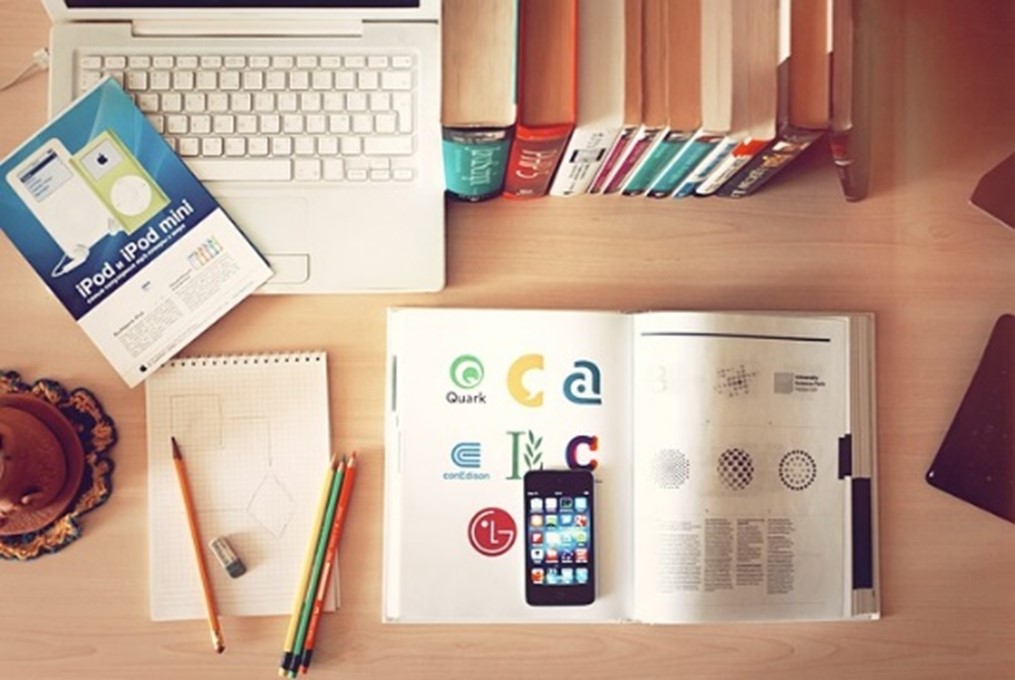
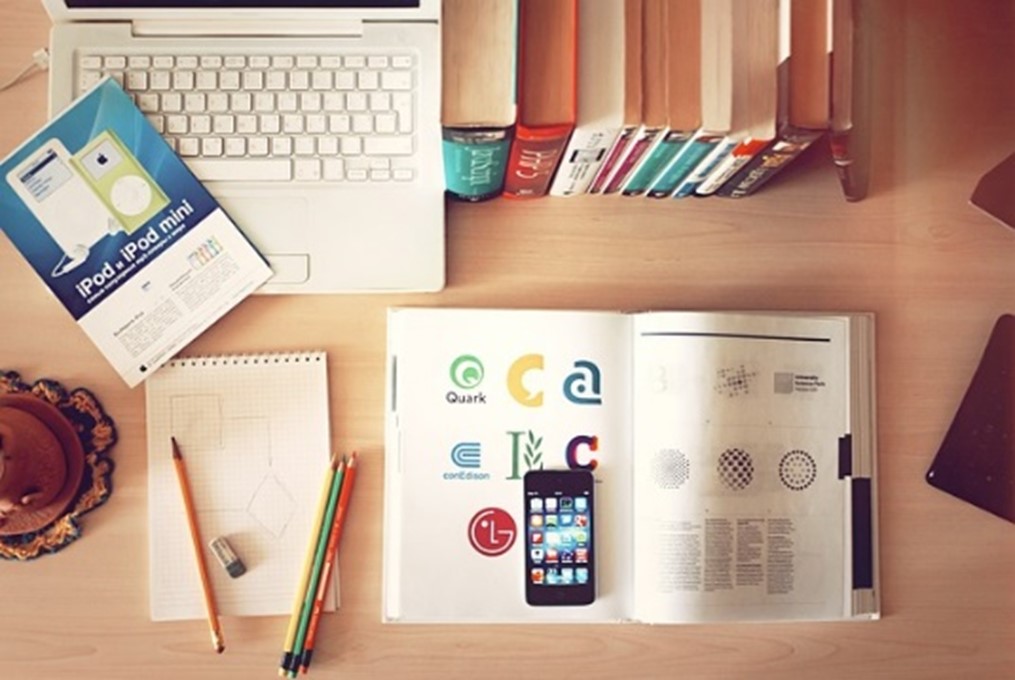
Attribution Sample A: Image by Free-Photos from Pixabay
Image 2

Some open resources provide a ready-made attribution. Image 1, which was sourced from the website Pixabay.com, had a ready-made attribution (See Attribution Sample A). These attributions typically appear near the image or when downloading the resource from the website (See Image 2).
Steps to using the Open Attribution Builder
For resources that do not provide a ready-made attribution, the previously mentioned Open Attribution Builder is an excellent, user-friendly option. Here are the steps to create your own attribution using the Open Attribution Builder:
Step 1: Find a copyright free image or resource.
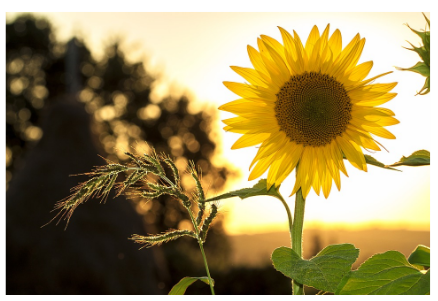
Step 2: Once you find your image or resource, take note of the following which you will need for the attribution builder template:
-
The image's URL web link
-
The title of the image (example: Sunflower)
-
The author's name
-
The type of attribution license
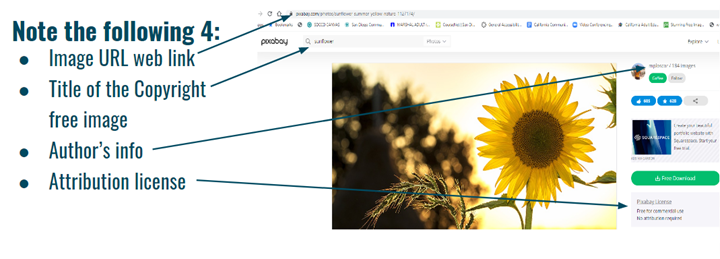
Step 3: Open the attribution builder http://www.openwa.org/open-attrib-builder/
Step 4: Add the "Title" of the image or resource.
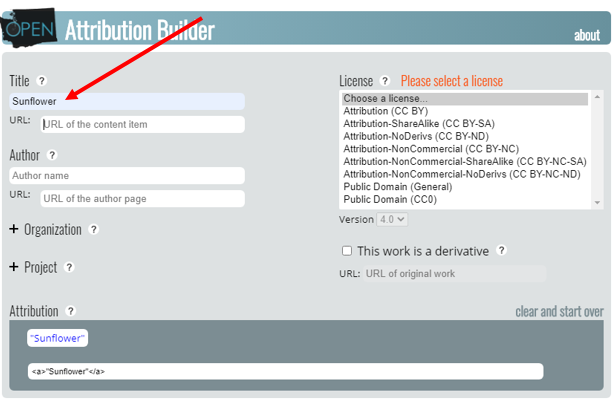
Step 5: Copy the URL from your image/resource site and enter it in two areas of the template under "URL."
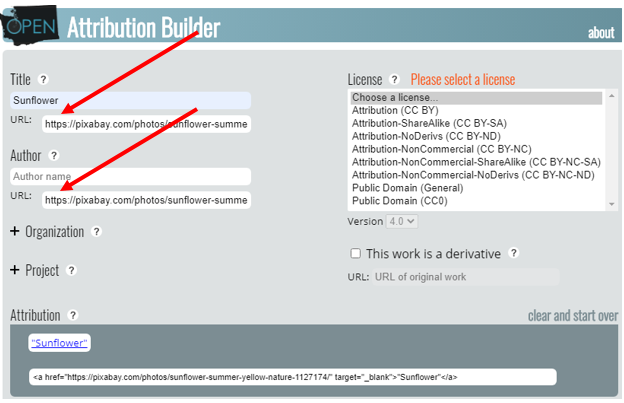
Step 6: Add the image or resource "Author" name.
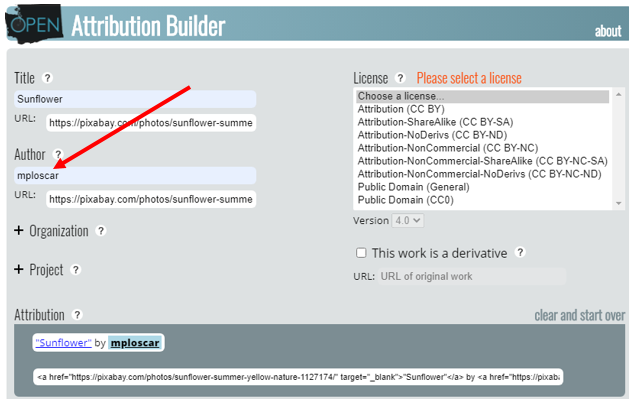
Step 7: Choose the Creative Commons license permission for your image or resource.
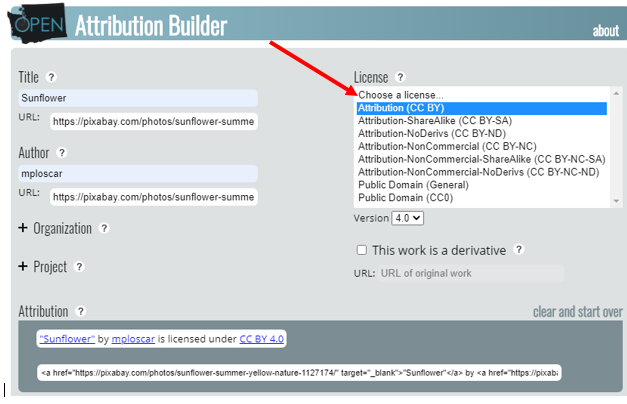
Step 8: Once you have entered all the data, click and copy the license that was created by the template.
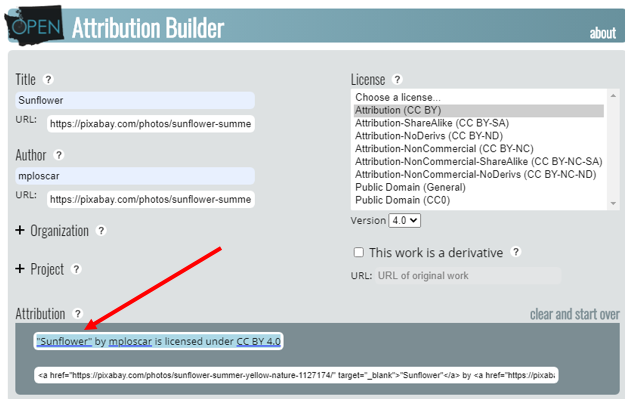
Attribution Sample B: "Sunflower" by mploscar is licensed under CC BY 4.0
Step 9: Add the copied attribution below or next to your image or resource.
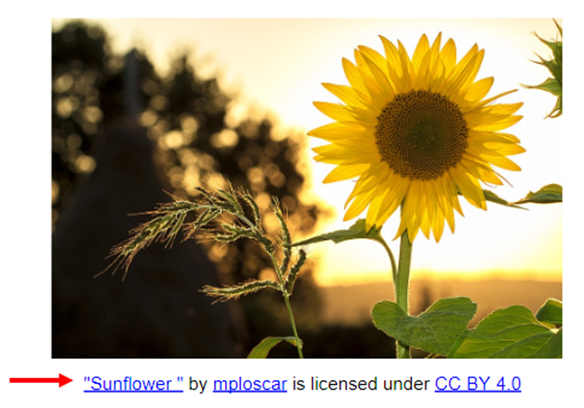
The Open Attribution Builder along with the Creative Commons logos are excellent, user-friendly resources that are openly available to all. Being knowledgeable in the types of Creative Commons licenses as well as how to find resources will assist you in curating and creating open educational resources. I welcome you to the world of sharing and OER and hope you find these resources effective, enriching, and inspire you to create and share own materials with our educational community.

